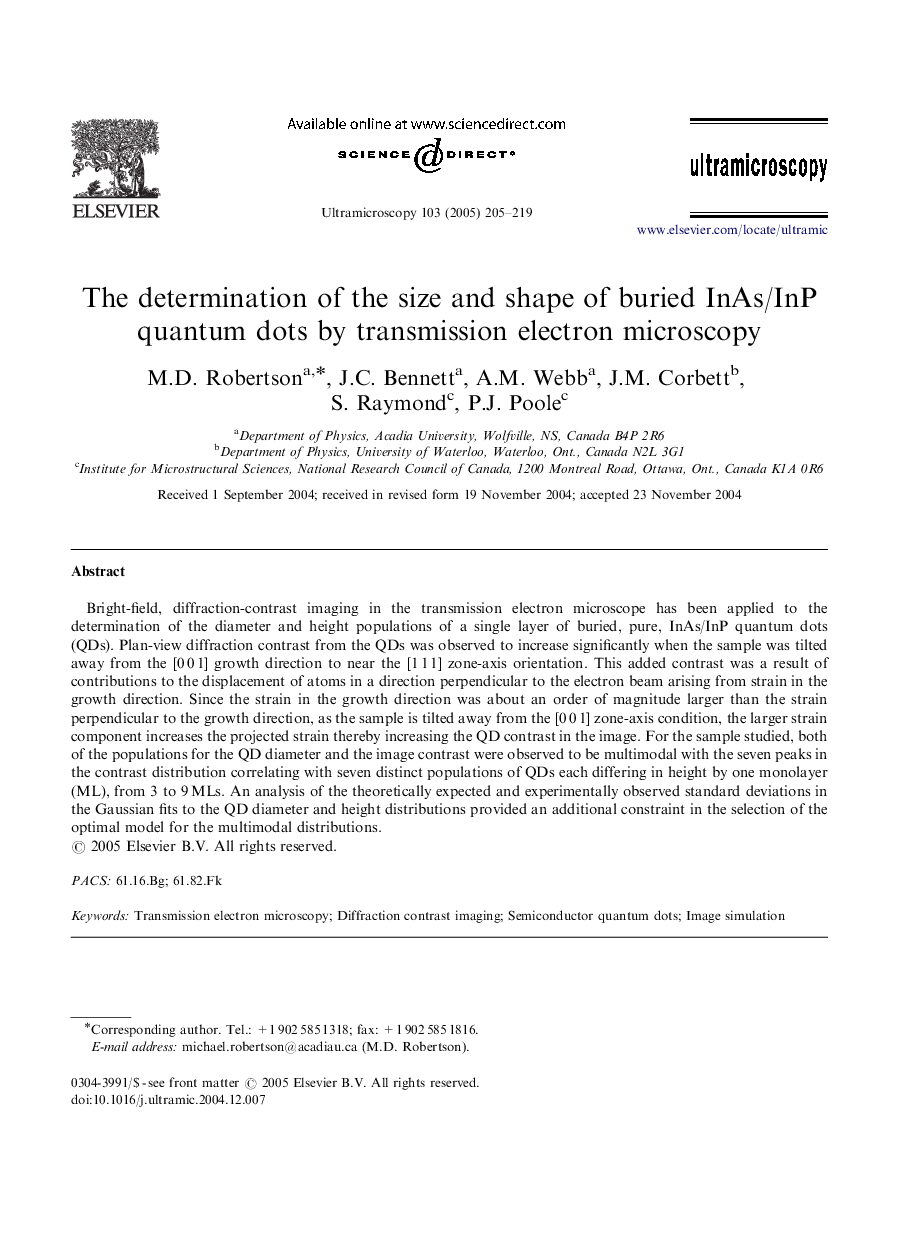| Article ID | Journal | Published Year | Pages | File Type |
|---|---|---|---|---|
| 10672655 | Ultramicroscopy | 2005 | 15 Pages |
Abstract
Bright-field, diffraction-contrast imaging in the transmission electron microscope has been applied to the determination of the diameter and height populations of a single layer of buried, pure, InAs/InP quantum dots (QDs). Plan-view diffraction contrast from the QDs was observed to increase significantly when the sample was tilted away from the [0Â 0Â 1] growth direction to near the [1Â 1Â 1] zone-axis orientation. This added contrast was a result of contributions to the displacement of atoms in a direction perpendicular to the electron beam arising from strain in the growth direction. Since the strain in the growth direction was about an order of magnitude larger than the strain perpendicular to the growth direction, as the sample is tilted away from the [0Â 0Â 1] zone-axis condition, the larger strain component increases the projected strain thereby increasing the QD contrast in the image. For the sample studied, both of the populations for the QD diameter and the image contrast were observed to be multimodal with the seven peaks in the contrast distribution correlating with seven distinct populations of QDs each differing in height by one monolayer (ML), from 3 to 9Â MLs. An analysis of the theoretically expected and experimentally observed standard deviations in the Gaussian fits to the QD diameter and height distributions provided an additional constraint in the selection of the optimal model for the multimodal distributions.
Related Topics
Physical Sciences and Engineering
Materials Science
Nanotechnology
Authors
M.D. Robertson, J.C. Bennett, A.M. Webb, J.M. Corbett, S. Raymond, P.J. Poole,
